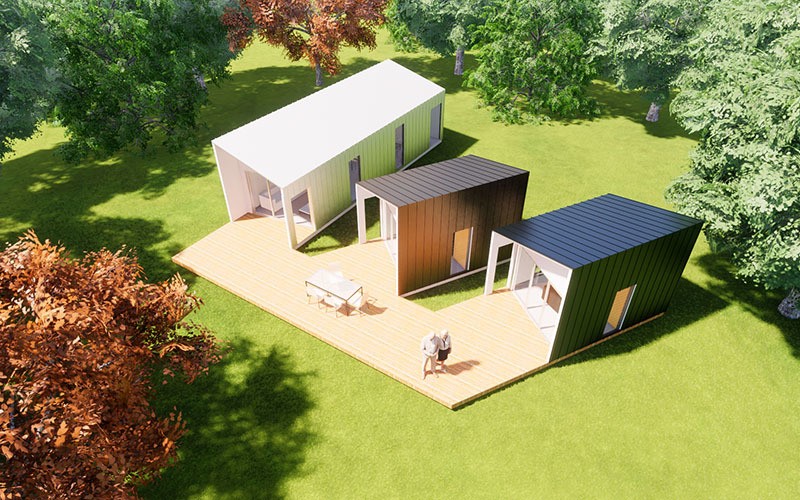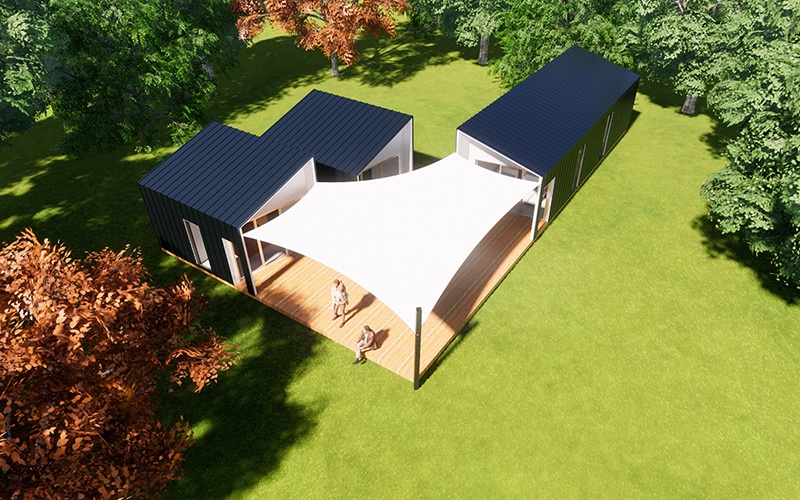
In Part Three of Practical Ways of Building an Energy Efficient Home on the Sunshine Coast, we will look at working with the land, focusing on water, ‘energising’ windows in your green home, and energy efficient lighting.
Work With Your Land
When building an energy efficient home on the Sunshine Coast, it is important to build to suit your land, aspect, and climate. These considerations will become money savers and overall smart architectural choices long term.
If you design your home to take advantage of the surrounding landscape from the outset, you’ll enjoy easier, less expensive lawn care for the life of your home. If your property slopes, plan your garden to take advantage of its natural characteristics, planting water-loving willows in low areas and conifers on higher ground. Try xeriscaping, a landscaping technique that uses native plants and rock to minimize water use. Developers can use green land development strategies that can save money and are environmentally-friendly.
Start enjoying the Hinterland lifestyle, begin your obligation free quote on your energy efficient home!
Focus On Water
Water is an ever important and highly regarded resource - especially if choosing to build off-grid, where you rely on tank water and need to be aware of your water consumption. People are becoming increasingly aware of fresh water consumption and conservation, and are taking further steps to reduce water consumption. When building an energy efficient home on the Sunshine Coast consider fixtures and appliances that conserve water such as grey water systems and Energy Star rated fixtures. There’s even a product on the market that automatically pauses your shower once the water has warmed up so that gallons of hot water aren’t wasted in an empty shower.
Have you considered capturing rainwater on your property? Before homes had running water, households often collected runoff in cisterns. The collected rainwater can be used to fill water features, irrigate gardens and maintain landscapes. There are also innovations in onsite water management technologies that include using a rain garden in place of simply piping water off the property and as a natural way of filtering runoff in your yard.

“Energise” Your Windows
Glass is a potentially overlooked item, in your home. However, if correctly treated, glass has the ability to add to your energy efficiency rating. The upfront cost upgrade will certainly pay itself off in the long run.
Energy Star windows have quickly become rock stars in the green home product market. These aptly-named windows are government-rated as Energy Star products, and are much more energy efficient windows than even the newer, double-pane models. Energy Star windows also greatly reduce sound transfer between outside and inside. The result? Heating and cooling costs drop and home values rise. When building an energy efficient home on the Sunshine Coast, homeowners can experience savings of hundreds of dollars a month in reduced energy bills by ‘energising’ the glass in their windows.
Energy Efficient Lighting
We have heard that lighting has changed significantly in the past 10 years. But what does that mean? For starters we are no longer measuring in watts, you are checking for lumens, as you don’t need high wattage to get a bright light. For that LEDs (light emitting diode) are the prominent products being used in houses. Although the initial cost is more expensive, by changing your light bulbs you ensure you are using the least amount of energy, therefore saving you money over their lifetime. You can save money further by fitting controls such as timers, or dimmers, which save electricity.
